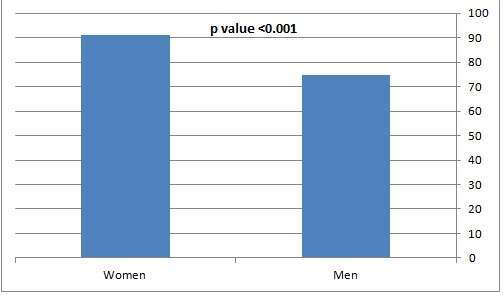
Gender Differences in Success Rates of Catheter Ablation of Atrial Fibrillation
2Cardiology, Hadassah Medical Center, Jerusalem
Introduction: Catheter ablation is a well-established therapeutic option for symptomatic patients with drug refractory atrial fibrillation (AF). There are limited data on gender differences in respect of baseline characteristics and long-term success rates of catheter ablation for AF.
Methods: we analyses a cohort of 422 consecutive patients, who underwent catheter ablation for AF in our institute. All patients were followed up by regular annual office visits, ECGs, periodic 24-48 hours holter monitors and loop recorders. The primary end point was recurrences of AF during the last year of follow-up.
Results: Women comprised 26.3% (n=111) of the cohort, they were older (61.5 ± 10.8 vs 55.4± 10.8, p <0.001), had higher proportion of hyperthyroidism (7.2 vs. 2.3%, p=0.03) as well as history of strokes or TIAs (8.1 vs 2.6%, p=0.02). No other significant disparities were evident (Table). Crude rates of survival free of AF over the last year of follow-up were higher in women (91 vs. 74.6%, p<0.001, Figure). In multivariable analysis, adjusting for relevant confounders (Age, hypertension, diabetes mellitus, NYHA≥3, hyperthyroidism and history of stroke/TIA) only older age (HR 1.07 per year, p<0.001) and male gender (HR 5.9, <0.001) were independently associated with recurrences of AF.
Conclusions: In our cohort, female gander was independently associated with lower rates of AF recurrences following catheter ablation.

Powered by Eventact EMS